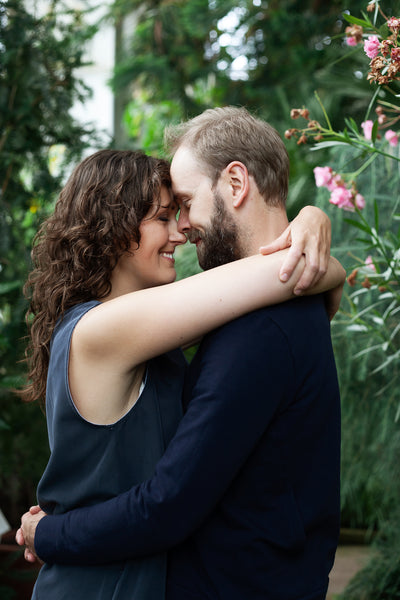Neuroscience of Hugs on the International Hugs Day :)
Science is only beginning to understand how and why we hug.

We all need a hug sometimes. There are few places where this is more evident than the departure gate at the airport. More often than not, words fail us when a loved one is about to walk away from us through the security check and fly to a faraway country, not to be seen for weeks or months. A hug can be tremendously comforting at the departure gate, or in all other situations in which we experience intense negative emotions, such as grief or fear. But hugs are also an important part of many positive, everyday situations. At the arrivals gate at the airport, the world often looks completely different than at departures, and we joyfully embrace our loved ones, whom we missed so much while they were gone. Similarly, hugs play a huge role in all sorts of situations that encompass positive emotions towards another person, such as romantic love or friendship. If we care for someone, we hug them, and research has shown that hugging can release large quantities of oxytocin, the human pair-bonding hormone. Thus, hugging someone literally deepens our relationship with that person on a biochemical level.
But what determines how we hug? Hugs are a behavior at the intersection of motor and emotional networks in the brain, and as such, they might be influenced by both of these neuronal networks. When we hug, there is usually a leading arm that initiates the embrace. About 90 percent of humans are right-handed — meaning they prefer to use the right hand for skilled activities, such as writing or drawing — so it is likely that most of us would also hug with the right arm. Indeed, this is also what an early South African study (Turnbull et al., 1995) on embraces in the arrival lounge of an international airport showed. Here, about 59 percent of observed travelers hugged leading with their right arm, and 41 percent hugged leading with their left arm. Additionally, the authors asked college students to hug their neighbors in a laboratory experiment and found similar results. Here, about 69 percent of individuals hugged with their right arm leading and about 31 percent with their left arm leading. Thus, this study indicated that there might indeed be a rightward bias when hugging, but the authors neither assessed emotions nor handedness directly.
To close these gaps, a recent large study led by German neuroscientist Julian Packheiser (Packheiser et al., 2018), investigated more than 2,500 hugs. In order to assess negative emotional situations, hugs were observed at the departure gate of an international airport. For positive emotional situations, the research team observed hugs at the arrivals gate. Also, in order to get emotionally fairly neutral hugs, the team analyzed internet video clips of people who offered blindfolded hugs to strangers in the street. The result? While most people showed a preference for right-sided hugs in all three situations, left-sided hugs occurred more frequently in emotional situations, no matter whether they were positive or negative. The left side of the body is controlled by the right side of the brain — which is heavily involved in processing both positive and negative emotions. Thus, this drift to the left side may show an interaction between emotional networks and motor preferences.
To test this theory, the team asked study participants to hug mannequins after listening to stories that induced positive, negative, or neutral emotions. Additionally, their handedness was determined with a questionnaire. Again, the emotionally charged situations led to more left-sided hugs than the neutral situations, but handedness also influenced hugging behavior. Right-handed participants hugged more often with the right arm than left-handed participants. Thus, embracing really seems to be controlled for by two neuronal networks: motor control and emotional processing. This might explain why for anyone in need of some comfort, a hug can be so much more than just a movement of the arms and a pressing together of two bodies. It’s a poignant, powerful gesture of love and support that goes straight to the emotional centers of our brain.
Interestingly, men showed a leftward drift even in neutral situations when hugging other men. This might mean that men might perceive these situations as emotionally negative and hence activate emotion-processing networks.
Embracing is not the only form of lateralized social touch that humans show. Kissing, for example, is often associated with a head turn to one side or the other in order to avoid potentially harmful nose bumping. Moreover, when cradling a child, most mothers and fathers show a clear side preference (Ocklenburg et al., 2018).
Source: Psychology Today
More on neuroscience to follow ;)
xoxo Anna
P.S. Check out be-with - clothing for hugs that I have created to make this neuroscience practical ;)


